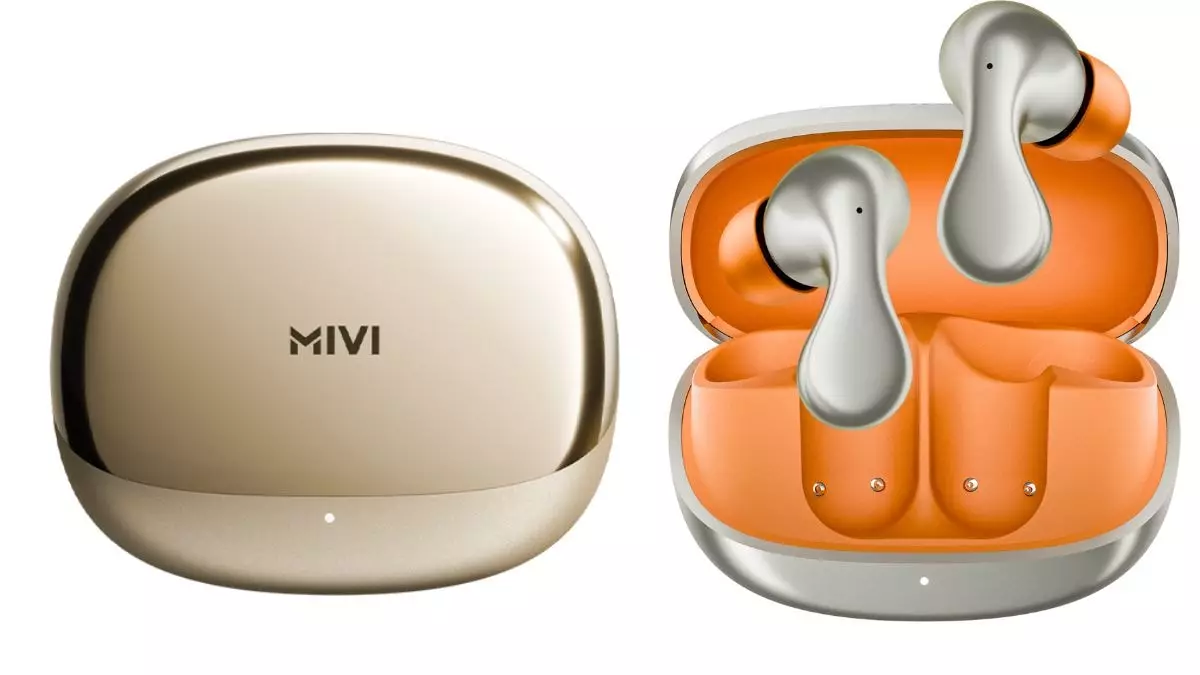In an era where technology promises to make our lives more seamless, the introduction of Mivi AI Buds encapsulates the paradox of modern innovation. On paper, these in-ear devices seem to represent the future—voice-activated AI assistants, advanced sound technology, and impressive battery life. Yet, beneath this glossy exterior lies a complex reality that raises questions about the sincerity of their innovation. Do they genuinely contribute meaningful progress or simply serve as a shiny distraction meant to lure consumers into a false sense of novelty? There’s a compelling argument to be made that many such devices, including the Mivi AI Buds, tend to prioritize marketing flash over tangible utility.
The so-called AI assistant, which purports to be context-aware and equipped with a memory function, sounds impressive initially. However, a deeper look reveals that its capabilities are heavily dependent on an app that must be actively connected to the device. This reliance on external software, combined with vague promises about “context awareness,” hints at a superficial veneer crafted to impress rather than deliver, especially for users seeking authentic voice-interactive features.
Crippling Dependence on Proprietary Ecosystems
One of the most troubling aspects of devices like the Mivi AI Buds is their dependence on proprietary ecosystems, in this case, the Mivi companion app. While some may commend the integration, it’s a classic example of tech companies attempting to lock consumers into specific platforms. This approach often fosters consumer frustration rather than fostering genuine innovation. The AI assistant’s effectiveness is hamstrung without the app, and the need for constant updates or connectivity reveals a fundamental reliance on infrastructure that can easily become burdensome or unreliable.
Furthermore, offering the AI service as a “free” feature initially might sound generous, but history suggests that these so-called freebies are often precursors to a paid model filled with sticky, optional upgrades. This “freemium” approach, while profitable for the brand, dilutes the promise of genuine innovation and slowly commodifies what could be genuine technological breakthroughs.
Design and Tech—A Double-Edged Sword
From a design perspective, the Mivi AI Buds demonstrate the typical trend of blending aesthetic appeal with incremental hardware improvements. With a metallic body, hourglass-inspired stems, and glossy finishes, they aim to exude sophistication. However, aesthetic allure often masks mediocre functionality, especially when the core features, like noise cancellation, lack detailed technical specifications. The absence of disclosed active noise cancellation details invites suspicion—are these just features on a spec sheet or a serious innovation?
Then there is the question of practicality—do these earbuds deliver an experience that justifies their proposed battery life of up to 40 hours? While such figures are enticing, real-world usage often falls short, especially if auxiliary features like the AI assistant or spatial audio consume additional power. The inclusion of dual connectivity, gaming mode, and water resistance are all standard among premium TWS earbuds, but they do little to elevate Mivi AI Buds above the crowded landscape of mid-range earbuds.
The Power of the Hype or the Reality of User Needs?
Ultimately, the core issue revolves around whether these devices serve user needs or exploit the allure of artificial intelligence and futuristic branding to generate hype. The AI avatars—such as the Wellness Coach or the News Reporter—sound innovative but risk becoming superficial or underutilized gimmicks. When technology over-promises in order to appear cutting-edge, users are left grappling with disappointment or, worse, skepticism toward future innovations.
In a broader societal context, the hype around AI assistants like Mivi’s can obscure the reality that many existing technologies already serve users well without overblown marketing claims. Consumer impatience or a desire for the latest shiny object often leads to the acceptance of superficial features, neglecting the importance of truly useful, reliable, and privacy-conscious tech.
While there’s undeniable merit in pushing boundaries, the current iteration of Mivi AI Buds underscores a cautious lesson: novelty should not eclipse durability, practicality, and respect for the user’s true interests. As the industry races ahead with gimmicks cloaked as breakthroughs, consumers must remain vigilant—questioning whether these “innovations” serve genuine human needs or merely corporate agendas dressed up in the language of progress.


Leave a Reply